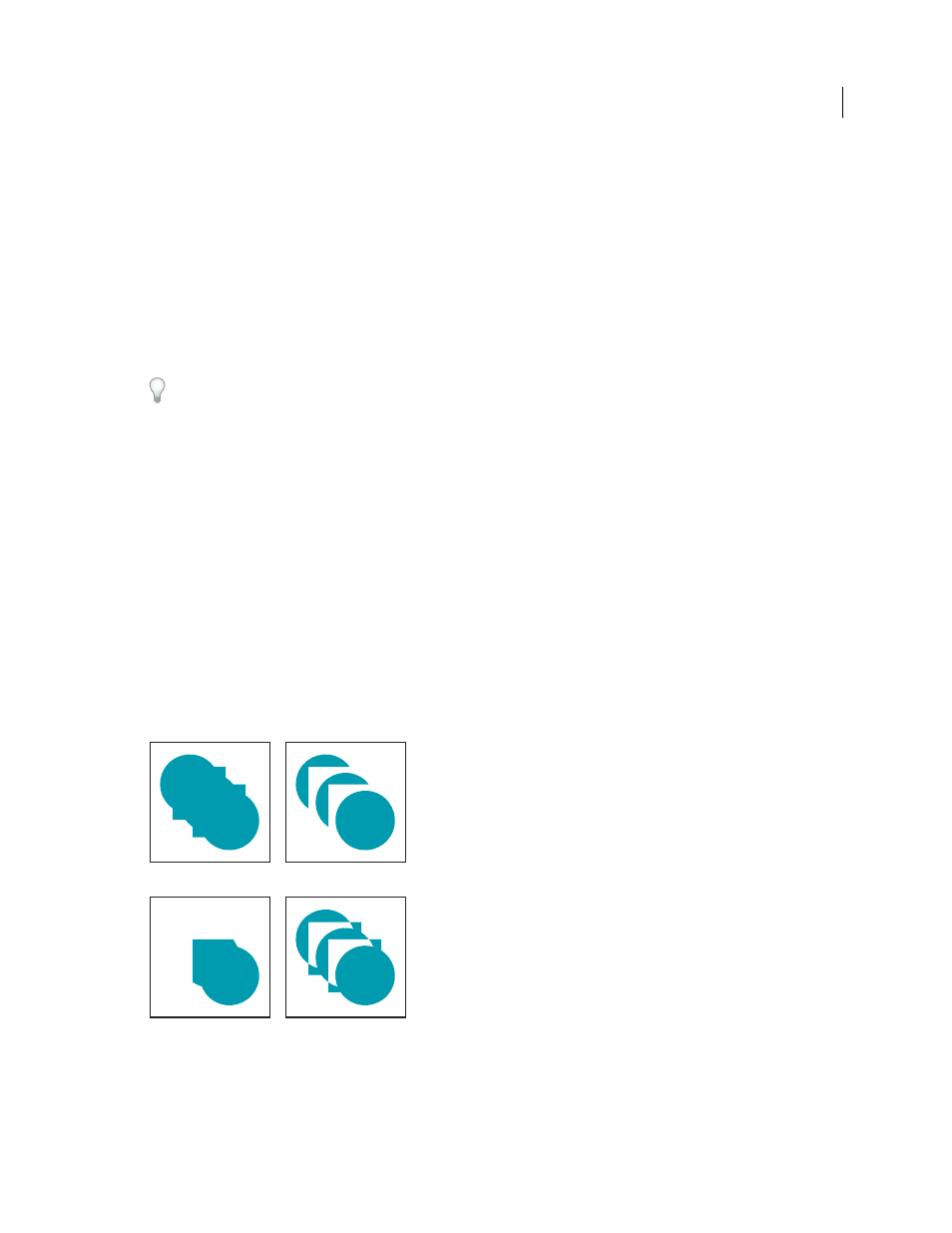Merge paths options – Adobe After Effects CS4 User Manual
Page 344

338
USING AFTER EFFECTS CS4
Drawing, painting, and paths
Last updated 12/21/2009
transformations are auto-animated, meaning that they change over time without the need to set any keyframes or add
expressions. The Wiggle Transform operation is especially useful following a Repeater operation, because it allows you
to randomize the transformations of each repeated shape separately. (See “
Using the Repeater to replicate shapes
page 339.)
Several properties for this path operation behave the same as properties of the same name for the Wiggly selector for
text animation. (See “
” on page 361.) The Correlation property specifies the amount of
similarity between the wiggled transformations of a repeated shape and its neighbor within a set of repeated shapes.
Correlation is only relevant if a Repeater operation precedes the Wiggle Transform operation. When Correlation is
100%, all repeated items are transformed in the same way; when Correlation is 0%, all repeated items are transformed
independently.
When randomizing repeated shapes keep the following in mind: If the Wiggle Transform path operation precedes (is
above) the Repeater path operation, then all of the repeated shapes will be wiggled (randomized) in the same way. If
the Repeater path operation precedes (is above) the Wiggle Transform path operation, then each of the repeated shapes
will be wiggled (randomized) independently.
Chris Meyer provides a video tutorial on the
that shows how to use the Wiggle Transform
path operation. This tutorial explains why you must use multiple instances of the Wiggle Transform path operation if
you want to wiggle multiple properties independently.
Zig Zag
Converts a path into a series of jagged peaks and valleys of uniform size. Set the length between peaks and
valleys using an absolute or relative size. Set the number of ridges per path segment, and choose between wavy edges
(Smooth) or jagged edges (Corner).
Merge Paths options
The Merge Paths path operation takes all of the paths above it in the same group as input. The output is a single path
that combines the input paths. The input paths are still visible in the Timeline panel, but they are essentially removed
from the rendering of the shape layer, so they don’t appear in the Composition panel. A fill and stroke are added after
the Merge Paths property group in the Timeline panel if a fill and stroke are not already present; otherwise, the output
path wouldn’t be visible.
Merge Paths options
A. Add for all shapes B. Subtract for squares C. Intersect for squares D. Exclude Intersections for squares
that shows how to combine multiple paths
into a single compound shape using the Merge Paths path operation.
A
B
C
D
